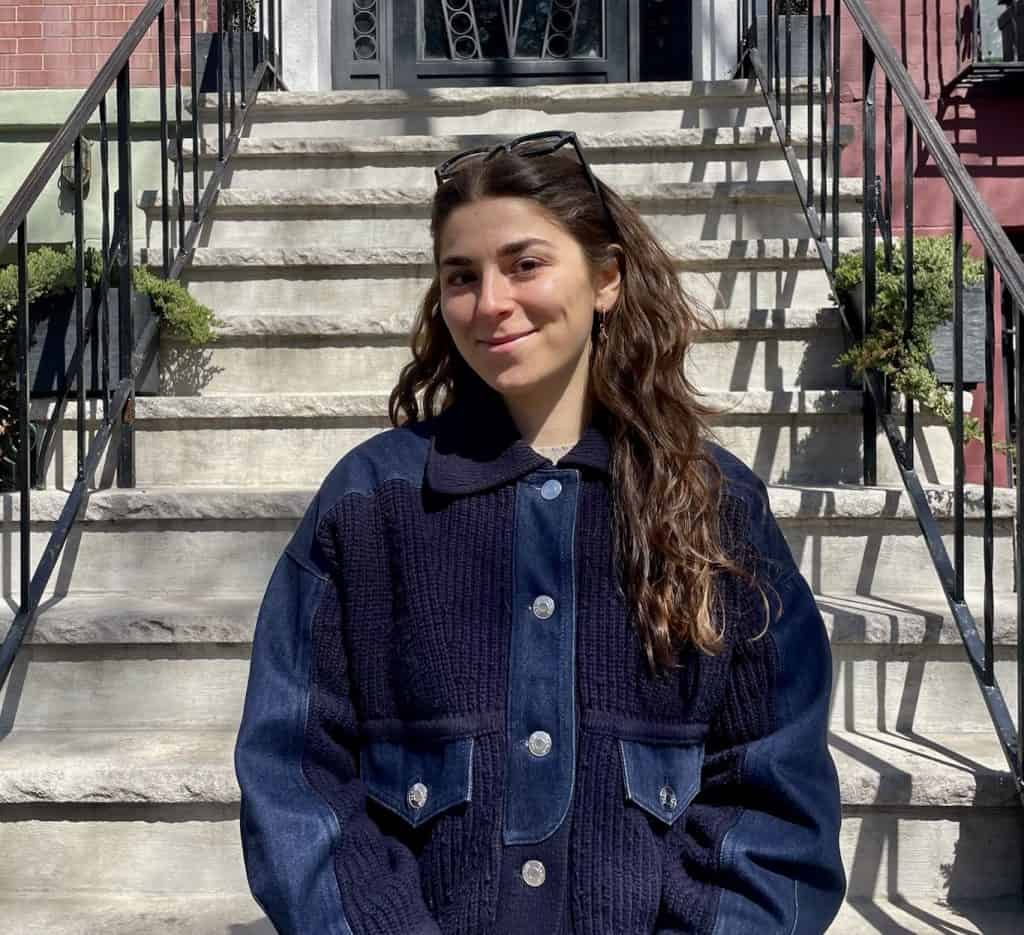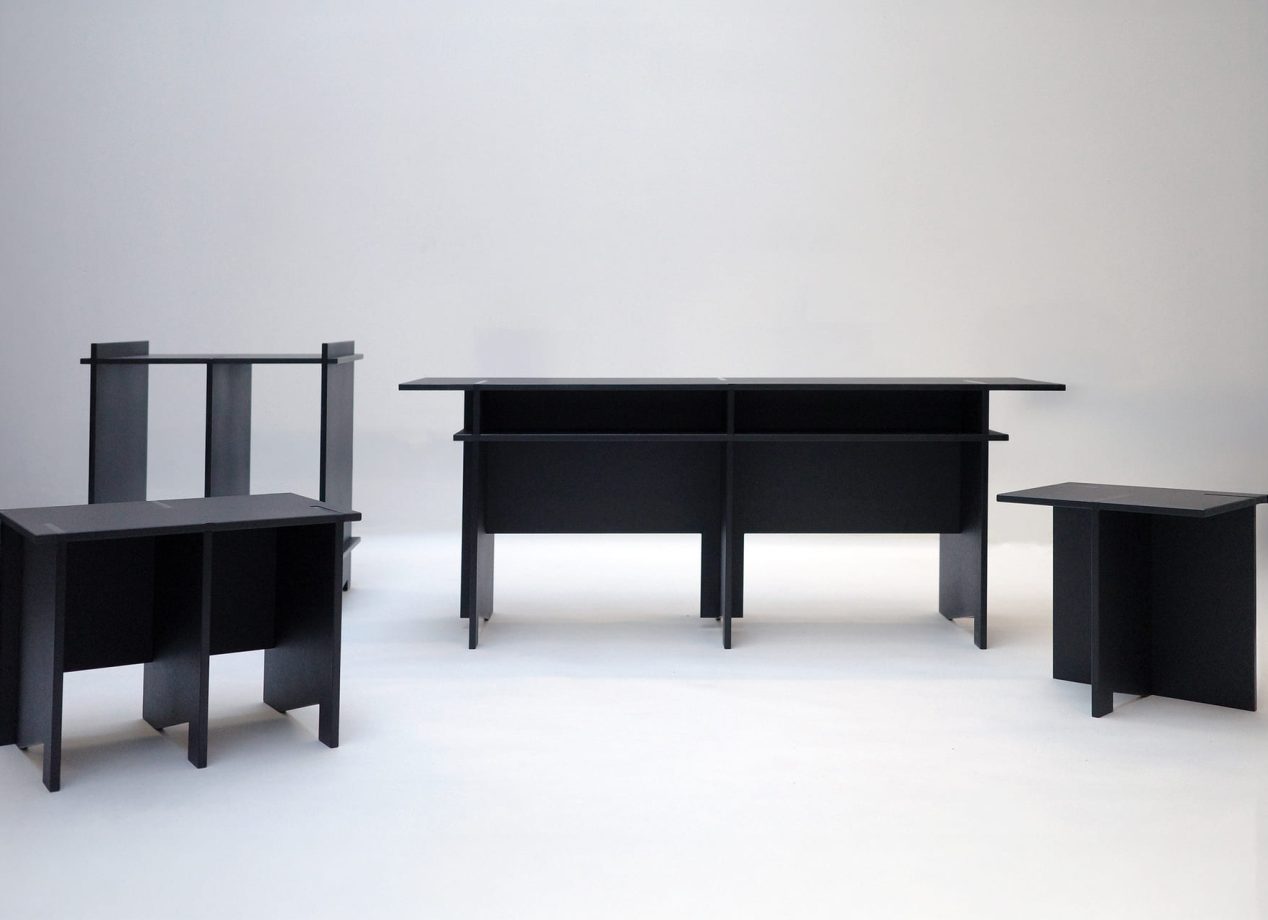Matilde Sirolli and Ines Trafford, Sotheby’s Institute of Art MA alumnae, have joined forces to launch Cuadra Projects—an initiative dedicated to supporting emerging artists on a global scale. From studying at Sotheby's Institute to premiering the debut exhibition The Paper Room at Milan Design Week, Sirolli and Trafford share the inspirations behind their work and a vision for a more diverse and sustainable art world.

Looking back, how did the MA Contemporary Art and MA Art Business programs at Sotheby’s Institute equip you with the tools and knowledge to navigate the art industry?
MS: The MA Contemporary Art program at Sotheby’s Institute-New York offered me a comprehensive understanding of contemporary art practices, both in New York and globally, enabling me to expand and further specialize in this field. The networking opportunities provided by the Institute were invaluable, providing not only industry connections and hands-on experience but also deeper insight into the diverse careers and roles within the art world. The entrepreneurial spirit at the Institute, unparalleled in its approach in this sector, gave me the confidence and the tools to embark on my own ventures.
IT: The MA Art Business program at Sotheby’s Institute-New York provided me with invaluable exposure to the entrepreneurial side of the art world through guest speakers, specialized programs, and the network of students—an experience I have not encountered before. The program equipped me with the essential knowledge to understand and establish businesses within the industry. It also offered insights into the gaps in the art market, helping me to identify what was missing and what new opportunities could emerge.

What inspired the creation of Cuadra Projects, and how does it support contemporary emerging practices on a global scale?
MS: Personally, the idea of Cuadra Projects stemmed from my desire to connect with artists and champion creativity without compromise. I believe that many contemporary practices, particularly those less commercially prominent, often struggle due to a lack of support—whether financial or representational—limiting their potential to succeed. In response, Cuadra Projects was founded to provide an alternative form of representation and support for artists in all disciplines.
IT: Cuadra Projects was born from a deep commitment to creating opportunities for emerging artists beyond the constraints of the traditional art market. Through my background in law, particularly my studies in intellectual property, I became aware of the lack of legal representation and structural support available to artists. This realization fueled my desire to develop an alternative platform that not only showcases artistic practices but also empowers artists in navigating their careers. Cuadra Projects aspires to create a more accessible and sustainable ecosystem for contemporary art.
How does your shared background at Sotheby’s Institute shape your approach to curating and organizing exhibitions?
MS & IT: With diverse backgrounds, expertise, and academic training, our approaches to curating and organizing exhibitions differ significantly. However, our shared interests and passions have fostered a strong connection, one that has only grown since we met on the first day of graduate school. Although we pursued two distinct programs at the Institute, this has proven to be highly advantageous, as it has allowed us to cover nearly all facets of the field. Ultimately, the key takeaway from our collective experience at the Institute has been a deeper understanding of the vast diversity within the contemporary art scene and the skills necessary to navigate it effectively.
What can Milan Design Week attendees anticipate from The Paper Room, the collection presented by Cuadra Projects?
MS & IT: The collection features furniture, lamps, and original collages, reimagining the versatility of paper and its derivatives, and exploring their aesthetic and functional possibilities. Drawing on organic materials, designers Ojo and Luana Meneux offer a vision of sustainable creativity that is both innovative and responsible. Inspired by human connections and conviviality and designed to accompany you throughout the stages of your life, The Paper Room showcases a collection of emotionally durable and solution-based design.
Visitors will be immersed in the designers’ personal lives and understanding of human connection, as the collection is strongly centered around the notion of conviviality. The furniture, defined by its limited height, offers insight into the designers’ vision of closeness and shared experiences. In contrast, the strikingly vertical lamps transcend their functional purpose, creating a sensory human experience that evokes emotion and reflects the designer’s interpretation of intimacy.
What drew you to the work of Ojo and Luana Meneux for The Paper Room?
MS & IT: We were big fans of Ojo and Luana Meneux’s work and eager to collaborate with them. We had secured a space in Milan and our next challenge was finding the artists whose practice would resonate with the site’s history and character. Given the factory’s legacy of craftsmanship and production, Ojo and Luana’s exploration of repetition, assembly, and sustainability felt like a natural fit.
Milan, as the host of one of Europe’s most significant contemporary design events, provided the perfect backdrop for this project. Presenting The Paper Room during Milan Design Week was an ambitious goal, and we couldn’t have imagined a more fitting moment or better artists to represent.
How do the organic materials used in The Paper Room contribute to its themes of sustainability and innovation?
MS & IT: The core theme of The Paper Room revolves around paper and its derivatives. The furniture in the exhibition is crafted from Richlite, an engineered material known for its strength, sustainability, and adaptability. Made from high-quality, FSC®-certified paper infused with thermosetting resin, Richlite undergoes a precise manufacturing process where layers of paper are compressed under intense heat and pressure. This results in a dense, solid panel with remarkable durability, making it ideal for furniture, architecture, and industrial applications. Beyond its structural integrity, Richlite offers an eco-conscious alternative to conventional materials, allowing designers to prioritize sustainability without compromising on aesthetics or performance.
For the lighting designs, the choice of material was equally intentional. While paper was the conceptual foundation of the exhibition, it posed limitations in durability and longevity, making it unsuitable for functional lamps. Instead, aluminum—one of the most recyclable materials—was chosen as a sustainable alternative. The designers maintained the essence of the original paper-based process by employing the same laser-cutting and folding techniques to shape the aluminum. This approach ensures that the lamps retain the exhibition’s ethos of transformation and longevity, reinforcing the idea of objects designed to accompany users throughout their lives.
What is your long-term vision for Cuadra Projects, and how does The Paper Room set the tone for future collaborations?
MS & IT: The Paper Room marks the launch of Cuadra Projects and simply bringing it to life within such a short time frame already feels like a success. This first exhibition sets the foundation for our long-term vision: to develop site-responsive artistic projects around the world, transforming underutilized spaces and infusing them with new meaning—even if only for the duration of a show.
As mentioned before, we aim to continue fostering alternative modes of artistic visibility by supporting artists who may not have access to traditional gallery representation or who seek to explore different paths beyond the conventional art market. Each project will be shaped by its location, embracing the history and architecture of the spaces we activate. The Paper Room is just the beginning, and we see it as a blueprint for future collaborations—an evolving platform that reimagines how and where art can be experienced.
What advice would you give to aspiring curators or art professionals looking to launch independent projects like Cuadra Projects?
MS & IT: We were fortunate to meet during our master’s program, surrounded by inspiring peers and the energy of New York, which motivated us to start Cuadra Projects. Of course, starting something new can be incredibly daunting, but having a collaborator to rely on makes the experience more approachable. It also means you have someone to share the triumphs and the challenges with, making it extremely fulfilling and rewarding.
Our advice to aspiring curators or art professionals would be to not let fear hold you back. Approach your project with the mindset of having fun—do it for yourself, not for external validation. Independent initiatives are deeply fulfilling; they allow you to connect with incredible artists, build meaningful relationships, and gain a deeper understanding of your own interests and creative vision.
Most importantly, reach out to people, ask questions, and embrace the process without overthinking how it will be perceived. Every project is a learning experience, and the most exciting opportunities often come from taking risks. And if you’re in a city like New York, take advantage of its energy—it thrives on new ideas and bold initiatives.
Banner image courtesy of Ojo and Luana Meneux, The Paper Room collection, 2025
